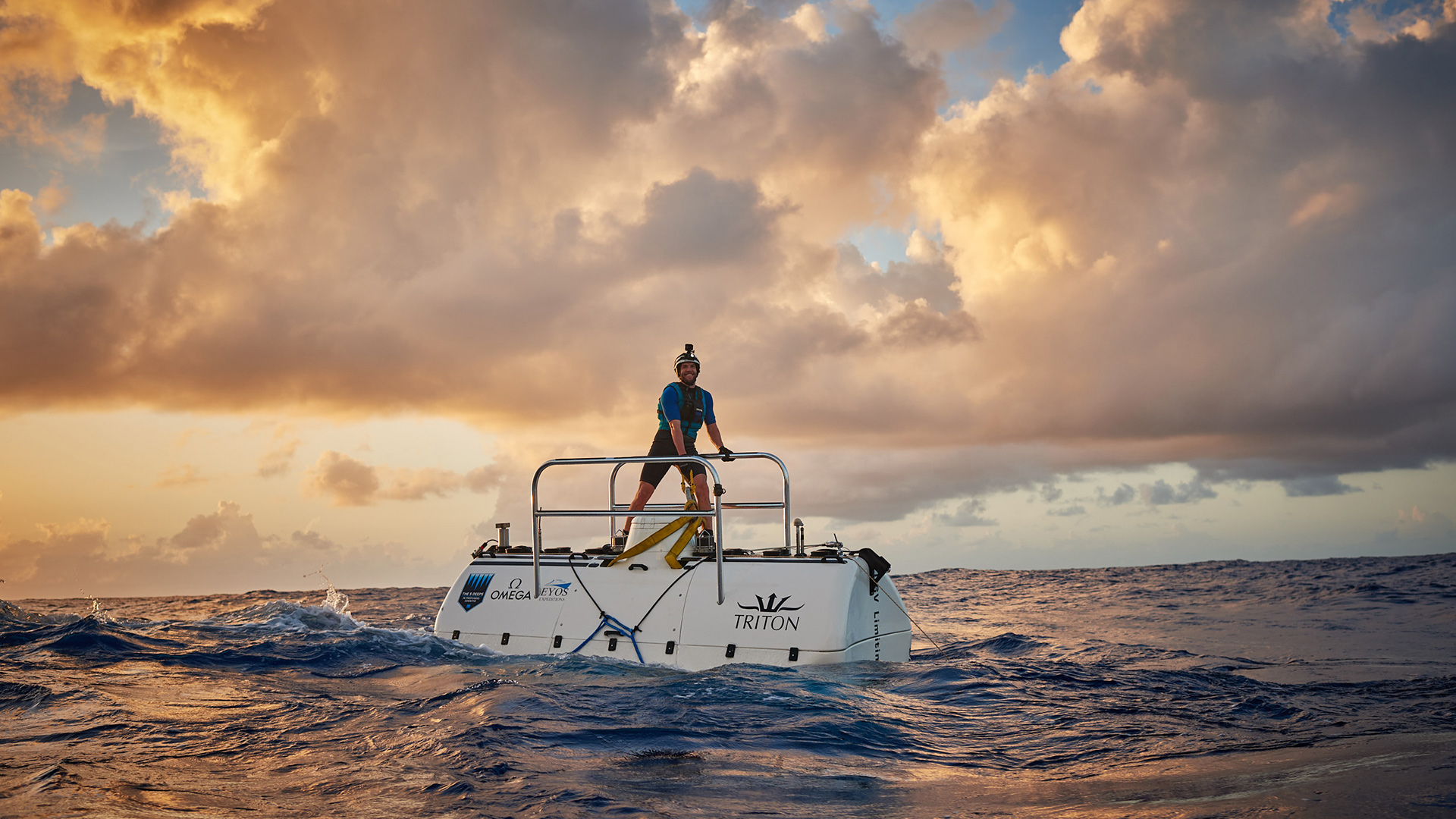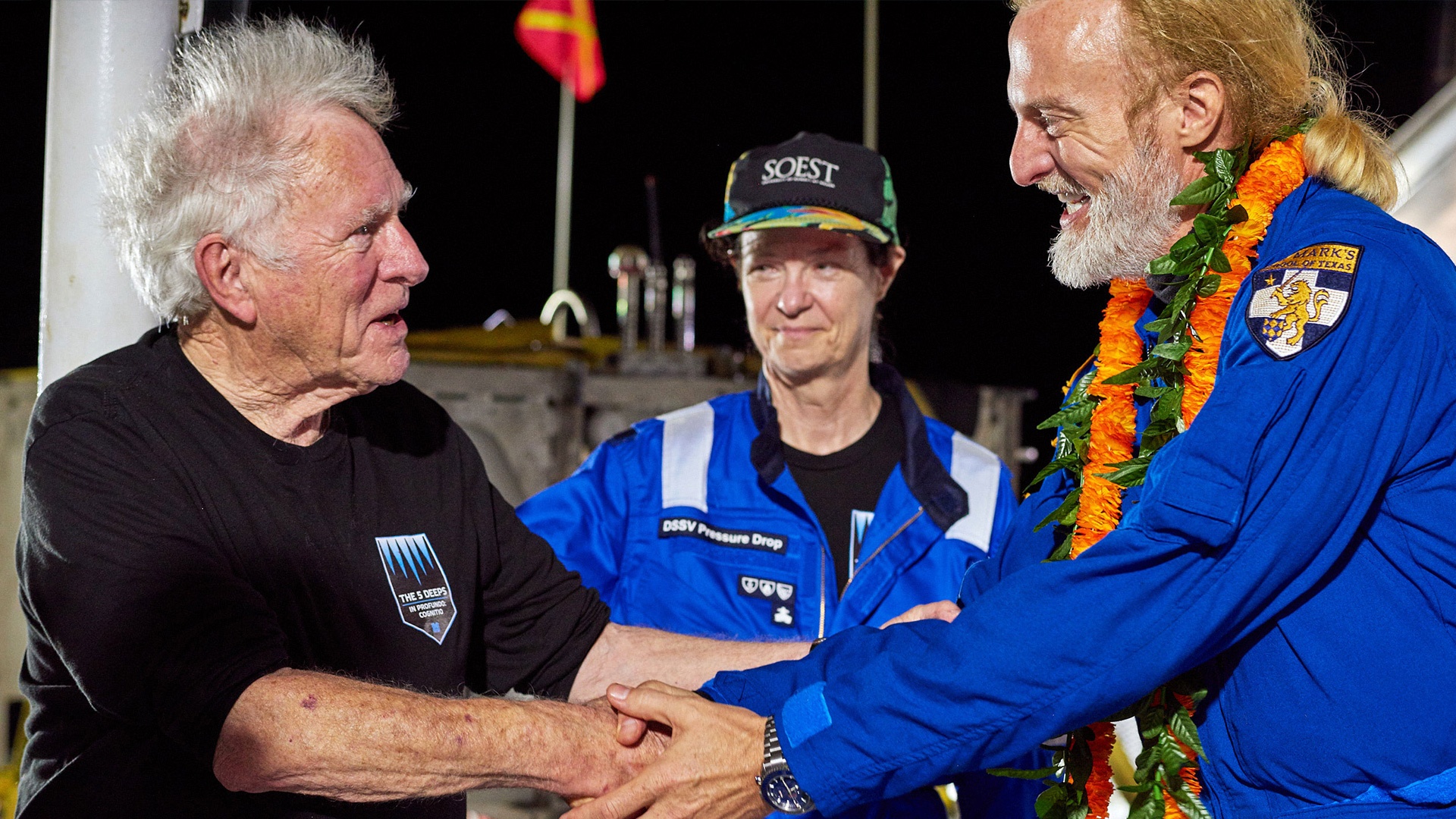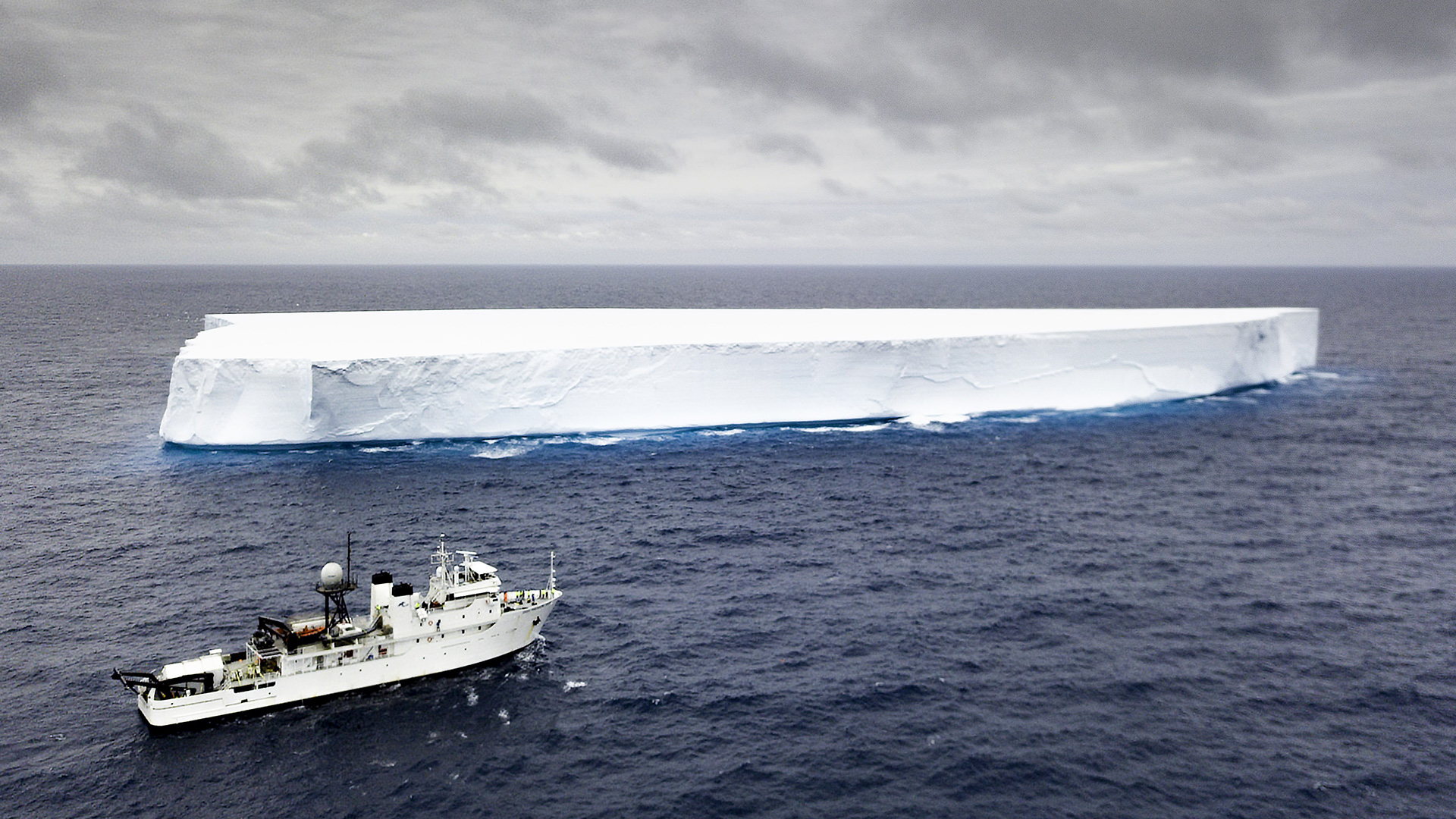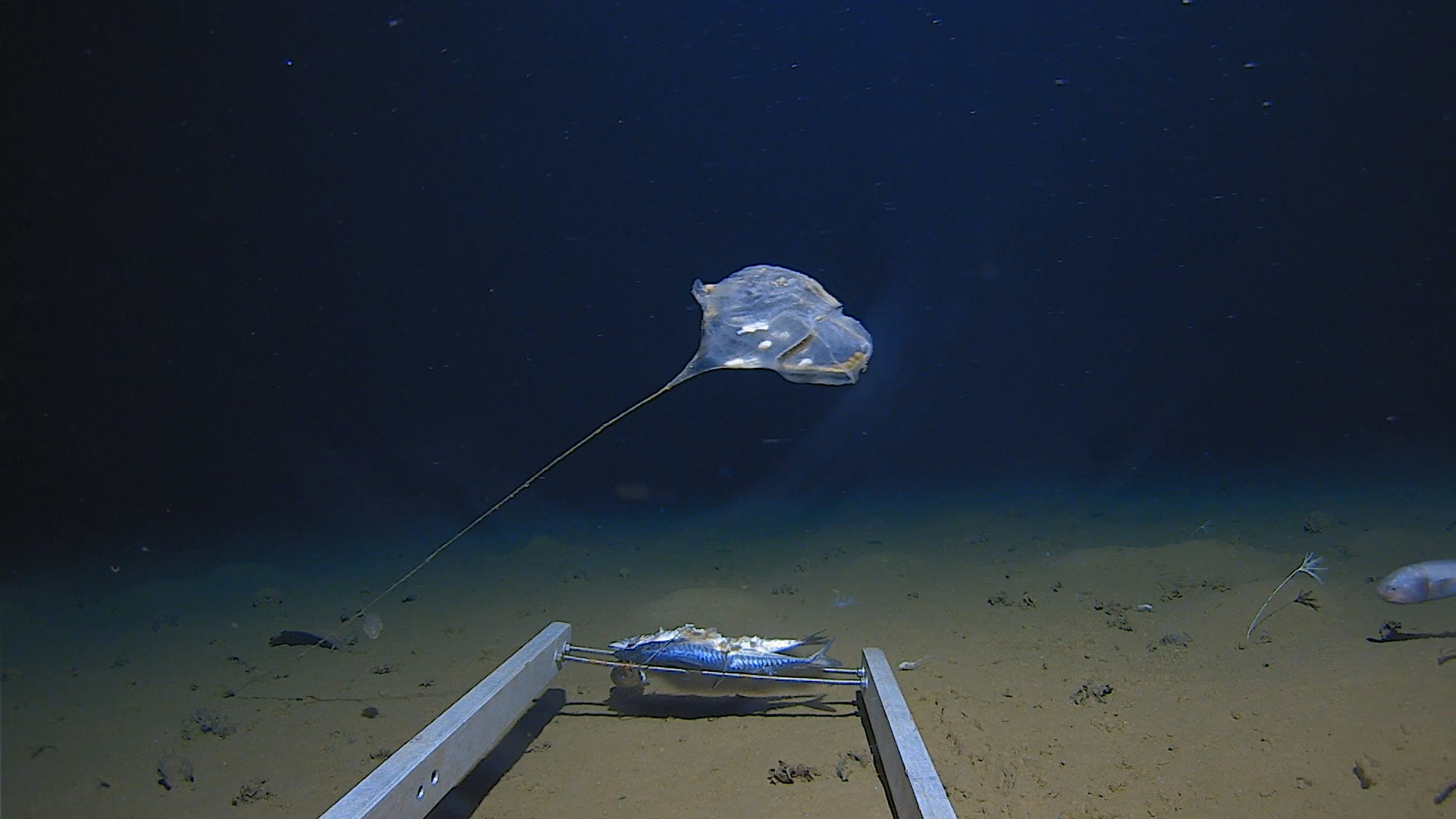Victor Vescovo and team have completed the fourth mission of the expedition in world’s deepest diving operational submersible, the Limiting Factor, in a historic expedition led by EYOS.
For the fourth time, the Five Deeps Expedition has successfully dived to the bottom of one of the world’s five oceans. The team completed a mission to reach what is commonly known as the deepest point on planet Earth: Challenger Deep within the Mariana Trench. Victor Vescovo set a new deep-diving record and is the first human to make multiple dives, solo, to its hadal depths in the DSV Limiting Factor (Triton 36000/2 model submersible) the world’s deepest diving, currently operational submarine. The expedition reached a maximum depth of 10,928 meters/35,853 feet deep, 16 meters/52 feet deeper than any previous manned dive.
EYOS co-founder Rob McCallum was Expedition Leader onboard and said, “It has been a monumental week for ocean exploration; we have broken world records and achieved a number of world firsts. Most importantly we have opened the door to the final frontier — the exploration of the hadal zone and the workings of the deepest parts of the world’s oceans.
“This vehicle is effectively a reliable elevator that can transport us to any depth, in any ocean. During this expedition we have traversed over 110 vertical kilometers (68 miles) and proved the capabilities of a vehicle that will be a platform for science, film making and exploration of Earth’s hidden recesses,” McCallum added.
Also onboard from EYOS was Expedition Director and Undersea Projects Kelvin Murray, along with an Expedition Physician and Expedition Photographer.
The last visit to the bottom of Challenger Deep was made in 2012 by filmmaker and explorer James Cameron, who reached a depth of 10,908 meters on a dive in his submersible, the Deepsea Challenger. Prior to Cameron’s dive, the first ever dive at Challenger Deep was made by the Trieste, a US Navy deep submergence bathyscape, in 1960 to 10,912 meters by Lieutenant Don Walsh (a member of the EYOS Advisory Board) and Swiss scientist Jacques Piccard. Both the Trieste and Deepsea Challenger only descended to the bottom of Challenger Deep once.
Between April 28 and May 5, 2019, the Limiting Factor completed four dives to the bottom of Challenger Deep and one final dive on May 7, 2019 to the Sirena Deep which is also in the Mariana Trench, approximately 128 miles to the northeast. Two of the dives, including the deepest one made on April 28, were solo dives piloted by Vescovo.
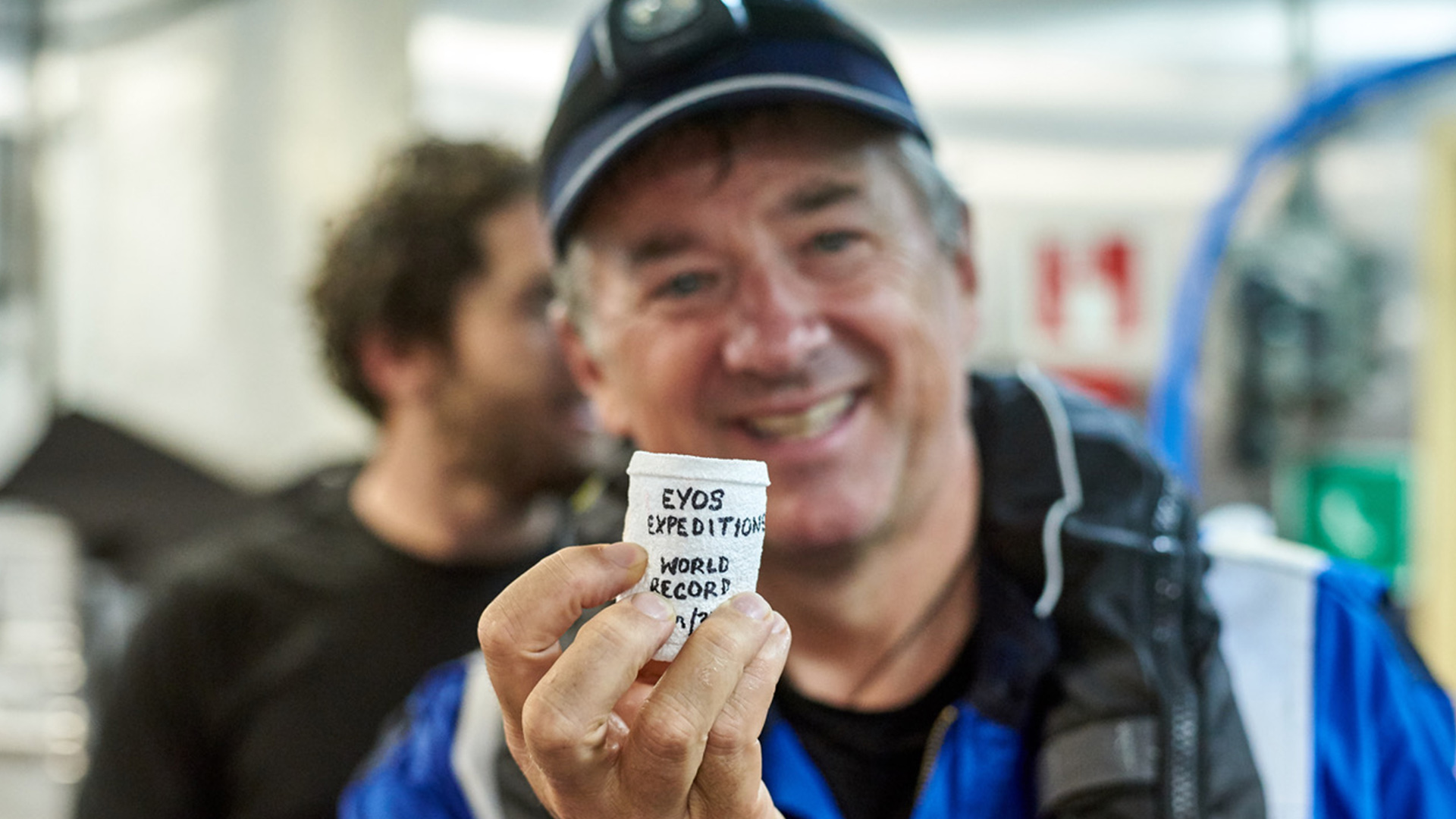
Complete Diving Program for Five Deeps Mariana Trench Expedition
The full diving program during this phase of the overall expedition consisted of:
- Dive #1 (April 28, 2019): Solo dive to bottom of the ‘Eastern Pool’ of the Challenger Deep to 10,928 meters (Victor Vescovo, Pilot). The expedition has calculated that this was the deepest dive by any human in history (see the footnote, page 1, for the methodology and rationale used in making this assessment). Four hours (248 minutes) were spent on the bottom exploring the basin, which is now the longest period of time ever spent on the bottom of the ocean by an individual.
- Dive #2 (May 1, 2019): A second, solo dive to the bottom of the ‘Eastern Pool’ of the Challenger Deep to 10,927 meters (Victor Vescovo, Pilot). Three hours (217 minutes) were spent on the bottom including extensive exploration of the southern, rocky slope of the Deep.
- Dive #3 (May 3, 2019): DNV GL Commercial Certification Dive and Lander Salvage in the ‘Eastern Pool’ of the Challenger Deep (Patrick Lahey, Pilot; Jonathan Struwe, Specialist). This was the deepest marine salvage operation ever attempted and was successful. A Five Deeps Expedition scientific lander was stuck on bottom during the previous dive (#2) and was freed and recovered from 10,927 meters by direct action of the manned submersible. The submarine also passed all of its qualification tests and commercial certification by DNV GL was granted. This makes the Limiting Factor the first full ocean depth-capable submersible to meet commercial safety standards and be granted commercial operating certification. (All previous submersibles achieving this depth historically were considered “experimental.”) Approximately 2.5 hours (163 minutes) were spent on the bottom by the sub and 2.5 days by the lander.
- Dive #4 (May 5, 2019): Scientific Dive in the ‘Central Pool’ of the Challenger Deep (Patrick Lahey, Pilot; John Ramsay, Sub Designer). Video surveying and biological samples were collected by the submersible and its landers for scientific analysis. The major focus was to investigate the north and southern edges of the subduction zones in the Challenger Deep. Time on bottom was approximately three hours (184 minutes).
- Dive #5 (May 7, 2019): Scientific Dive in the Sirena Deep which is part of the Mariana Trench (Victor Vescovo, Pilot; Dr. Alan Jamieson, Chief Scientist). First manned descent to the bottom of the Sirena Deep, which focused on geological, biological, and video survey and collection in the trench basin. Time on bottom was three hours (176 minutes) and the deepest piece of mantle rock ever recovered from the surface of the western slope of the Mariana Trench was collected.
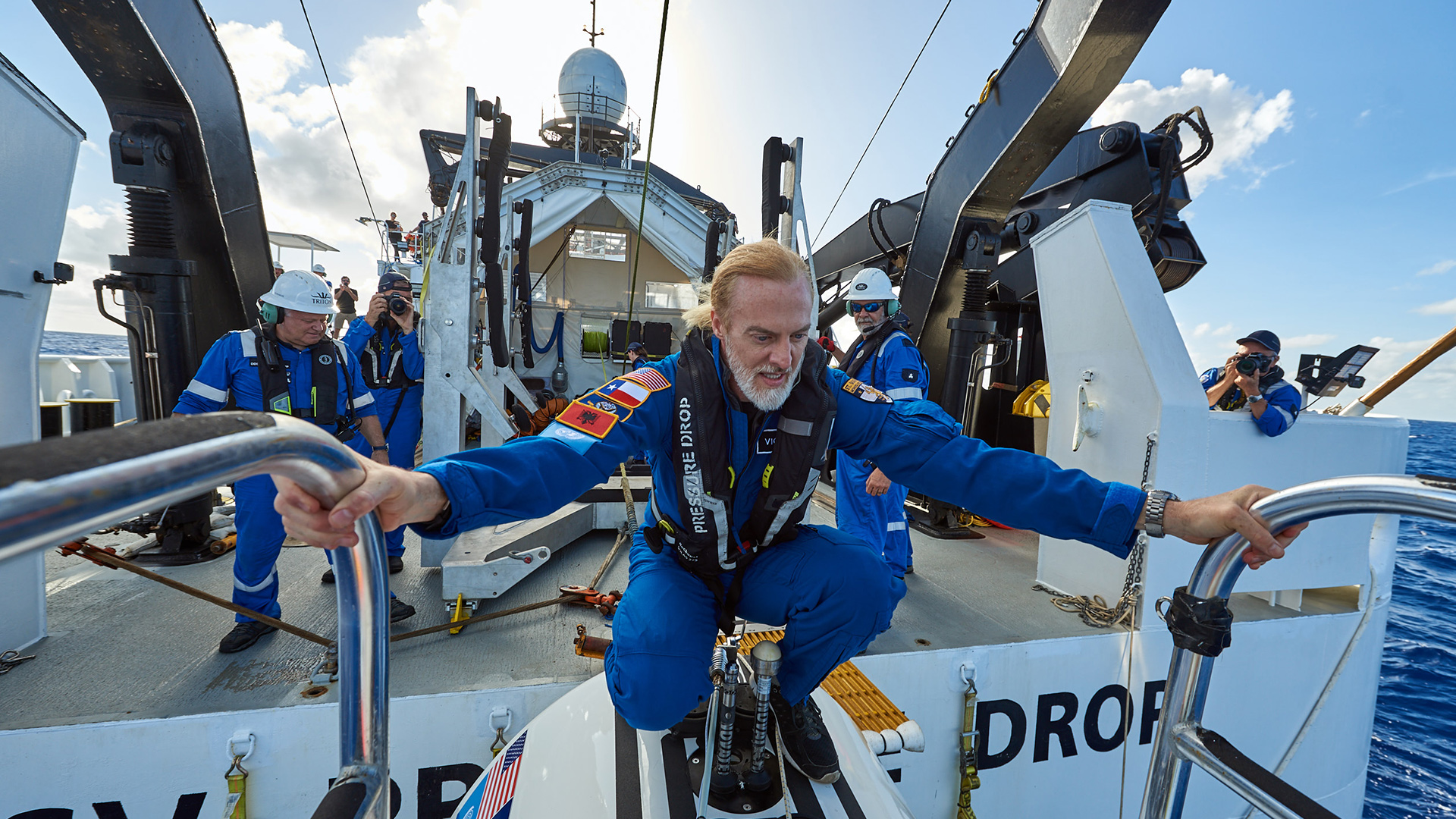
The Five Deeps Expedition is being filmed by Atlantic Productions for a five-part Discovery Channel documentary series due to air in late 2019.
“It is almost indescribable how excited all of us are about achieving what we just did,” said Vescovo after arriving in Guam after the completion of the dives. “This submarine and its mother ship, along with its extraordinarily talented expedition team, took marine technology to an unprecedented new level by diving — rapidly and repeatedly — into the deepest, harshest area of the ocean. We feel like we have just created, validated, and opened a powerful door to discover and visit any place, any time, in the ocean — which is 90% unexplored.”
Dr. Don Walsh Onboard for Historic Mission
On board the DSSV Pressure Drop for this historic accomplishment was legendary American oceanographer, explorer and marine policy specialist, Dr. Don Walsh (Captain, USN Ret.), who made the first successful decent into the Mariana Trench in 1960. The maximum depth achieved was measured and later corrected to be approximately 10,916 meters.
“Victor Vescovo’s imagination and fierce curiosity; Triton Submarines technical brilliance, and the outstanding performance of the officers and crew of mother ship Pressure Drop all converged to make this expedition a huge success. And I was there to see it,” said Dr. Don Walsh (Captain, USN Ret.). “Nearly six decades ago Jacques Piccard and I were first persons to dive into Challenger Deep, the deepest place in the World Ocean. Then in 2012 James Cameron made a solo dive there. And now in 2019, The Five Deeps Expedition’s submersible Limiting Factor was the third.”
Walsh continued, “This time it was an impressive tour de force as the team repeated the Challenger Deep dive four times in just eight days. This was a demonstration of system reliability and operational efficiency never seen before in exploration of the oceans’ deepest places. I was proud and honored to have been invited to be part of Victor’s team when it made world history at Challenger Deep.”
As with every other previous expedition dive, the team extensively measured and mapped the operating area with a Kongsberg EM124 sonar to pinpoint the desired dive sites. Once on the bottom, Vescovo or the two-person sub team of pilot and specialist usually spent 3-4 hours on the bottom conducting their survey and science missions. On average, it required 3.5 hours for the submersible to reach the bottom of the Challenger Deep and 3.5 hours to ascend. The average total mission duration lasted from 11-12 hours including one hour combined for launch and recovery of the sub from the surface, well under the submersible’s required life support endurance of four days with two persons onboard.
With his dives, Vescovo also became the first person to have summitted Mount Everest and been to the bottom of the ocean, as well as having skied to both the North and South poles. Thus, he is the first to have completed visiting one version of the “Four Corners of the Earth”: Mt. Everest, Challenger Deep, and both geographic poles. In 2011, he completed the Seven Summits — climbing the highest peak on every continent — and has now been to the bottom of four of the world’s oceans.

Numerous World Records and Firsts Completed
Other firsts or notable features of this recent phase (April 26 – May 7, 2019) of the Five Deeps Expedition:
- Deepest dive in history, to 10,928 meters, surpassing the Trieste’s maximum depth of 10,912 meters reached in 1960. (Vescovo)
- The deepest solo dives (two) in a submersible (Vescovo), to 10,928 and 10,927 meters.
- The greatest number of solo dives by an individual below 7,000 meters, now at six times(Vescovo).
- The first individual (Vescovo) to dive the Challenger Deep twice, and both were solodives. Patrick Lahey of Triton Submarines become the second person to dive the Challenger Deep twice, on two-person missions that followed Vescovo’s solo dives with a maximum depth reached of 10,927 meters. This also made Lahey the second Canadian to reach the bottom, after James Cameron.
- The first time any submersible has been to the bottom of the Challenger Deep more than once. In this case, four times in eight days by the DSV Limiting Factor.
- The Limiting Factor executed the deepest marine salvage operation in history by searching for, and locating, one of the expedition’s scientific landers on the bottom of the Challenger Deep and freeing it from deep silt that had trapped it on the bottom. The recovery was made using the submersible’s manipulator arm at 10,927 meters. The lander was stranded on the bottom for 2.5 days.
- John Ramsay, an Englishman by birth and the submersible’s principal structural designer, became the first British citizen to descend to the bottom of the Challenger Deep. Coincidentally, the Challenger Deep was named after a British ship the HMS Challenger.
- Jonathan Struwe, a marine engineer and inspector with DNV GL, became the first German citizen to descend to the bottom of the Challenger Deep.
- The first manned dive into to the Sirena Deep, 128 miles to the northeast of the Challenger Deep, but also in the Mariana Trench, to a maximum depth of 10,714 meters. Vescovo piloted, with Dr. Alan Jamieson, the expedition’s Chief Scientist, acting as scientific mission specialist. Three hours on bottom and the first-ever rocks collected from that deep.
- Four ocean bottoms, of five, how now been visited by one person (Vescovo) with one more to dive — the Molloy Deep in the Arctic Ocean — which is the shallowest of the five at an estimated 5,669 meters.
- The scientific team identified at least three new species of marine animal during this dive series, including a type of long-appendaged Amphipod, discovered at the bottom of the Challenger Deep.
- The first US State flag — of Texas — to be taken to the summit of Mt. Everest and down to the bottom of the ocean. Vescovo’s personal mountaineering ice axe has also made the journey to the highest and lowest points on earth.
Future Dives Planned for Pressure Drop
“Our goal was to build a submersible capable of repeated dives to any depth with its pedigree and security assured by third party accreditation,” said Patrick Lahey, President of Triton Submarines. “Our dives in the Mariana Trench demonstrate we achieved our objective. The Triton 36,000/2 (“LF”) represents a quantum leap in the capabilities of a manned submersible and everyone at Triton is immensely proud to have had the privilege and opportunity to create such a remarkable craft, which was only possible by the unwavering support and vision of Victor Vescovo.”The next stop on the Five Deeps Expedition is the Horizon Deep within the Tonga Trench in the South Pacific Ocean. Previously measured at 10,882 meters deep, the Tonga Trench is widely known as the second-deepest ocean trench in the world. Due to the small difference in measured depths between the Challenger and Horizon Deeps, Vescovo and team plan to find out, once and for all, if the Tonga Trench is actually only second-deepest in the Pacific or if it actually deeper than the Mariana Trench.
After the Tonga Trench diving program is complete, the Five Deeps Expedition team will stop once more at the Puerto Rico Trench (Atlantic Ocean, 8.376 meters) on its way to the overall expedition’s fifth and final “Deep” dive in late August, the Molloy Deep in the Arctic Ocean. The mission at the Puerto Rico Trench is to perform science dives in a location previously visited by the French submersible Archimède in 1964.
